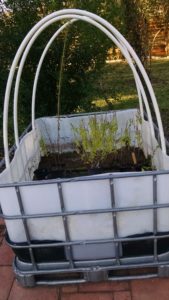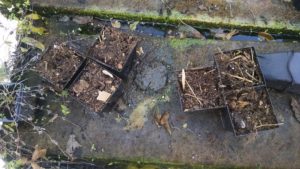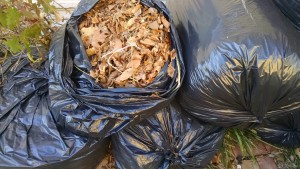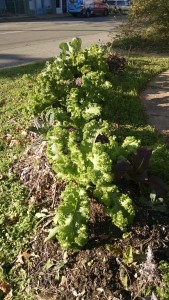If you read my last post, you will know that I am experimenting – isn’t all gardening experimenting? And that’s what makes it really fun!
About 10 days ago, I planted seeds for broccoli raab, cauliflower, and collards and placed the 4″ pots in a wicking bed. Well, yesterday (at 9 days) I checked them.
The broccoli raab had sprouted, as had the collards. However, the cauliflower was having difficulty. Since the cauliflower was on another wicking raft, I moved it to the raft with its cole buddies. Also, I was told that sometimes it is necessary to top water till fully moist before the wicking is started – sort of like priming a pump.
Here’s a picture of the little seedlings! It’s another 70 degree day today and tomorrow, with temperatures dipping into the 60s in the next couple of days. But still not close to freezing. I’m optimistic that I can grow them to transplant size. Although, in the wicking bed I could easily protect them, while the water reservoir maintains a more constant temperature.
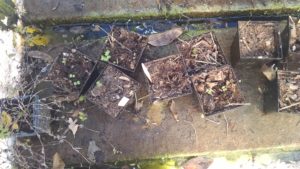 Note the bits of green to the left and barely visible in the middle.
Note the bits of green to the left and barely visible in the middle.
Stay tuned….

